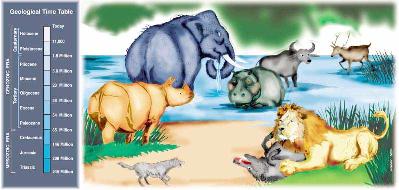
21st November 1999
Front Page|
News/Comment|
Editorial/Opinion| Business|
Sports|
Sports Plus| Mirror Magazine

![]()

- It's history
- Once upon a time…
- Kala Corner - By Dee Cee
- Brooding melancholy and fiery passions
- 'I don't set out to be an artist'
- Now your veges in the net!
- Not a church, but a temple
- Who is who in Sri Lanka?
- Stop this exploitation
- Sai Baba: He knows best
- Nothing happens in the Year 2000
- Loyal to truth and justice - Down memory lane with H.L. de Silva
- The Willie I knew
- The perfect ten - women who changed the world Sirima leads
- We are hugging a decadent past - Thoughts from London
- Do you just grin and bear while your child suffers?
- A blazing heart within a thin frame
- A 'different' politician
- Boisterously entertaining
- Kandy comes alive!
- Did you see Andare and the fisherman?
- Letters to the editor








It's history
The initial research on our pre-history took place in the 1880s. J.Wayland, Assistant Mineral Surveyor to the government was probably the first to focus attention on the possibility of finding the remains of Pleistocene mammalian fauna in Lanka.
Another who contributed immensely was P.P Deraniyagala who headed the Colombo Museum from 1939 to 1963. The catalogues at the museum record that he uncovered the largest amount of fossils mainly from the gem pits of Ratnapura.
Archaeology Director-General Dr. S. Deraniyagala has a word of advice for amateur palaeontologists. "Though most fossils in Sri Lanka are in a good state of preservation, if you find a soft fossil it is best to keep it underwater or in a moist condition as it could turn to powder."
There is no particular reason for fossils to be found only in the Ratnapura region. So if you dig deep enough in your own back-yard and are lucky enough, you too may find fossils, he says.
The Miocene limestone formations in the Puttalam area are now being
used as raw material for cement production.
Once upon a time…
Lions, rhinos and hippos may have been part of Sri Lanka's indigenous fauna in ancient times research has revealed
By Udena R.Attygalle
 Lions,
rhinos and hippos may have been part of Sri Lanka's indigenous fauna in
prehistoric times, recent research has revealed
Lions,
rhinos and hippos may have been part of Sri Lanka's indigenous fauna in
prehistoric times, recent research has revealed
Palaeontology or the study of fossil remains, has brought to light that these animals that we associate with the African subcontinent,may have been found in Sri Lanka in ancient times.
So what about humans? Studies at Horton Plains have revealed amazing probabilities. There is evidence to debate the possibility that humans existed on the Plains 6000 years ago and 3500 years before Sri Lanka's recorded history began. And they were grouped within an agrarian society.
The oldest recorded fossils discovered in the island belong to the Jurassic period (208-146 million years). They are mostly plant fossils found in the Adigama and Thabbowa region between Puttalam and Anuradhapura.
Next come fossils of the Miocene period (23-5 million years ago) found in the sedimentary limestone of Aruvkalu, north of Puttalam and in the Minihagalkande area in Yala. These areas have yielded prehistoric fossils of molluscs and also echinoderms.
The fossil beds that have yielded the most spectacular evidence belong to the Pleistocene period (1.8 million to 11,000 years ago). The gem gravels of Ratnapura at a depth of 10 to 150 feet have been the main source and hippopotamus (Hexaptrodon palaeindicus) remains were excavated from this area.
Dr. S. Deraniyagala, Director General of the Department of Archaeology says they probably date back to 150,000 years and are similar to one found in India from that period. They are also similar to the larger variety of African hippopotamus now alive.
The rhino fossils that were found belong to two species (Rhinoceros Sinhales and Rhinoceros kagevena). The dating remains a problem. Most recently the remains of a rhino were found in Lunugala, off Passara.
While legends and stories about lions have been part of our folklore, there has been no evidence to prove they were anything but a myth.
When famous archaeologist P.P. Deraniyagala made the initial discovery of a lion's tooth, doubts were cast by others as to whether it was that of a lion or a tiger. But Mr. Deraniyagala named it Leo sinhaleyus, assuming it was that of a lion.
A Research Associate at the Wild Life Heritage Trust, Kelum Manamendraarachchi said, "There is evidence to suggest that Sri Lanka, India and other South East Asian countries were at some time joined together.
The lion may have crossed over to Sri Lanka during this time. The tiger (Panthera tigris) though in South East Asian countries, probably preferring a wet environment may have been prevented by the block of dry barren land in the south of India and the north of Sri Lanka from crossing over to Sri Lanka."
Yet the recent discovery of the remains of three lions in a cave site by Dr.S. Deraniyagala, P.P Deraniyagala's son cleared the mystery. Says Dr. Deraniyagala, "The findings were clarified to be that of lions by the Smithsonian Institute in Washington and the British Museum." The remains have been calculated to belong to the period 40,000 to 15,000 years ago. These lions were similar to fossilized lions found in Andhra Pradesh in continental India, he said.
The Asiatic lion (Panthera leo persica) which once roamed the lands from India to Greece, is presently found in the wild only in the Gir wildlife sanctuary and national park in Gujarat, western India. These Asiatic lions are slightly different to and a little smaller than the African lions but the closeness in genetic make-up suggests that the two populations separated as recently as 100,000 years ago (recent on the evolutionary time scale!). Even so, according to Dr. Deraniyagala, the lions found in Kuruwita are extremely large in size.
Manamendraarachchi adds that "a hunting dog' (Coun javenicus sinhaleyus) much like a wolf or jackal existed during the Pleistocene period. Two varieties of elephant (Elephas hysudricus and Elephus namadicus) too had existed along with the ancestors of the now surviving elephant! The extinct varieties had in fact been bigger than the Asian elephants now living.
The Ratnapura fossils, meanwhile, have been very hard to date accurately. Dr. Deraniyagala explains that "the Ratnapura soil has been re-deposited and re-deposited through time, making collations with Indian fossil findings, the only method of accurate dating. In fact fossils of even the Gaur, a buffalo-like animal much larger and more aggressive, have been found in the same area. The Gaur though still found in India became extinct here during the last century. It is believed that the home of the Gaur was the Horton Plains region.
In fact, Robert Knox in 1681, records seeing the animals in the Royal zoological gardens of the Kandyan king. The plant leaf manuscript 'Paravriththa' also reveals "that the Kandyan kings used to test the strength of their warriors by pitting them against the Gaur".
Palinology or the study and morphological identification of micro plant fossils have revealed startling possibilities. According to botanist T.R Premathilaka of the Post Graduate Institute of Archaeology, University of Kelaniya, there is evidence to suggest that 6000 years ago the Horton Plains was a savannah with high temperatures and very little rainfall.
Gradually through the years the range turned to what it is today- one of the wettest and coldest places in the island, with evergreen and deciduous forests.
Mr. Premathilaka's work has also revealed slash-and-burn cultivations, forest clearance and even grazing during this period. Ancient spores of domesticated barley (Hordeum.sp) and even rice (Oryza.sp) have been found and identified.
Adding to the debate is Dr. Deraniyagala's findings in the 1970s of ancient human remains and stone tools on the Plains. But the age of these findings is still unknown.
"Between 4000 and 3000 years ago there are signs of unidentified grazing and then the human activities dwindle away"' reveals Mr. Premathilaka's work.
So what happened to this ancient race if it did exist? Did it fade away with the savannah? The answers remain locked in the peat and mire of the Plains.
Palinological work is also being conducted in Sigiriya and the Mundal/Puttalam areas. The studies of Mr. Premathilaka are limited to the last 11,000 years or the Holocene epoch.
Another interesting finding, according to Dr. Deraniyagala, is fossil evidence that suggests that the Kalutara hog deer may be an indigenous species. It was earlier thought to have been brought to the country from the Ganges valley in India.
"Sri Lanka was connected to India throughout history due to the drop in sea levels, and so it is impossible to view Sri Lankan prehistory in isolation from India," Dr. Deraniyagala said.
Meanwhile, Professor Kapila Dahanayake, Senior Lecturer of the Geology Faculty, University of Peradeniya says, "There is evidence to suggest that Sri Lanka was covered by glaciers during the Triassic period (245-208 million years ago)".
At this time Sri Lanka was a part of the huge landmass called Gondwanaland and was very close to the North Pole. The evidence has come from the clay deposits of the Weuda area.
![]()
Front Page| News/Comment| Editorial/Opinion| Plus| Business| Sports| Sports Plus| Mirror Magazine
Please send your comments and suggestions on this web site to

